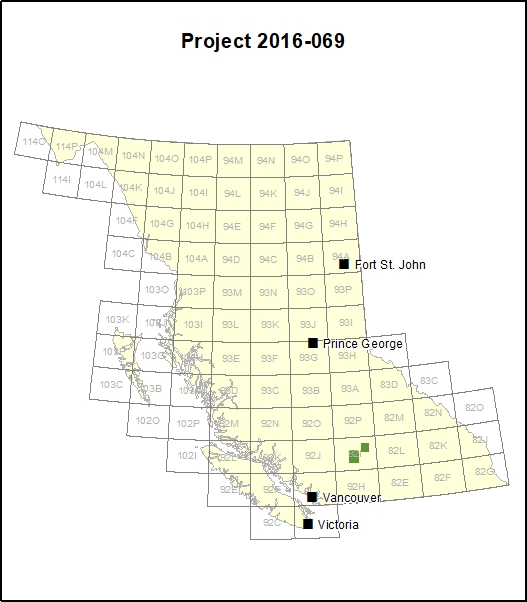The Need
Mine operators are required to restore disturbed land to a defined condition upon mine closure, a process known as reclamation. To establish guidelines and protocols for successful ecosystem reclamation following mine closure, research is needed to establish reliable tools to monitor and measure ecosystem reclamation. In alignment with the need to consider the entire ecosystem, targeting soil development and microbial function, plant traits and function, vegetation productivity and diversity, food webs and habitat structure, this project explored the diversity of arthropods at reclaimed sites.
Project Goals
This goals of this research were to:
- Reduce the knowledge gap and provide management recommendations which ultimately strive to achieve a functional ecosystem;
- Demonstrate the need for pre-disturbance baseline data of natural ecosystems; and
- Focus reclamation to include additional environmental characteristics such as overall biodiversity, structure and ecosystem and not just vegetation health.
Project Benefits
This project demonstrated innovative methods and tools to characterize arthropod assemblage and biodiversity through DNA metabarcoding technology which can reduce reliance on indicator taxa.
Mine reclamation developments are an investment in the long-term health of the land at mine sites.
This project was undertaken through a Natural Sciences and Engineering Research Council of Canada Industrial Research Chair to Dr. Lauch Fraser (Thompson Rivers University) in partnership with Greater Vancouver Sewerage and Drainage District, Genome BC, Geoscience BC, New Gold Inc, Teck, Real Estate Foundation of BC, Arrow Transportation, Trans Mountain Corp and BC Cattlemen’s Association. Geoscience BC also participated in a second research project completed through this funding program: Soil Amendments in Mine Closure, Central Interior, British Columbia (2016-068).
Survey Area
This study took place at the New Afton Mine and the Highland Valley Copper Mine. Both mines are near Kamloops in BC’s South Central Region.
How was the data collected?
The researchers used tent-like structures called ‘malaise traps’ to capture flying insects and pitfall traps to capture small ground insects in an ethanol solution to preserve the specimens for DNA analysis.
At a genomics lab, the collected insects were identified by comparing their unique DNA barcode to existing records on the Barcode of Life Database (BOLD: www.boldsystems.org). Soil and vegetation samples were also collected to better understand the whole ecosystem.
What was Found?
The reclamation sites included in the study assessed age of reclamation (new, old and reference) and soil amendment type (biosolids, no biosolids and reference). The arthropods collected for the study were analyzed with high-throughput DNA metabarcoding. Results suggest that the dissimilarity of arthropod assemblage between the reclamation age and amendment sites imply that another external factor is a stronger driver. In addition, despite treatment correlations with order-level taxa, there was not a statistically significant relationship of the overall richness between the sites. However, indicator species analyses identified several taxa uniquely associated with age and amendment sites. No invasive taxa were found to be representative of the study sites.
The study recommends the ecological assessment of an area prior to mining to establish baseline data about arthropod assemblages as they can assist with information on the pre-disturbed natural ecosystem. Additional monitoring of arthropod assemblages and biodiversity can then inform on potential concerns such as the presence of invasive species.
